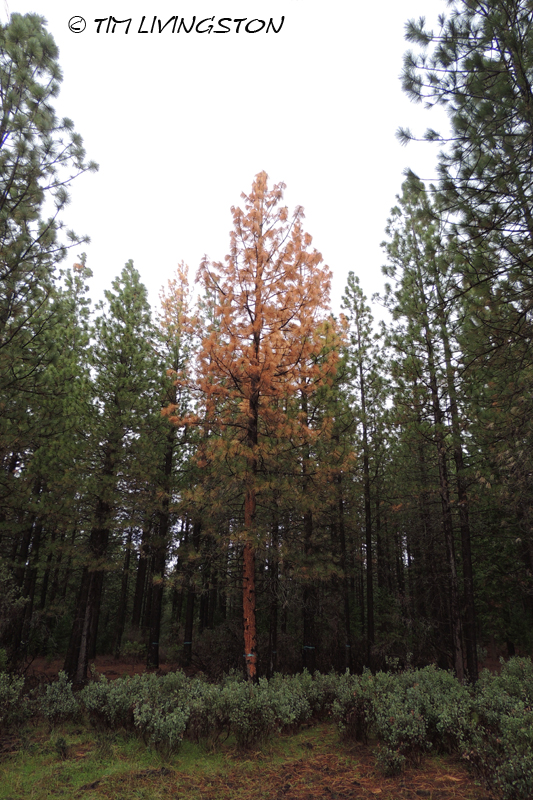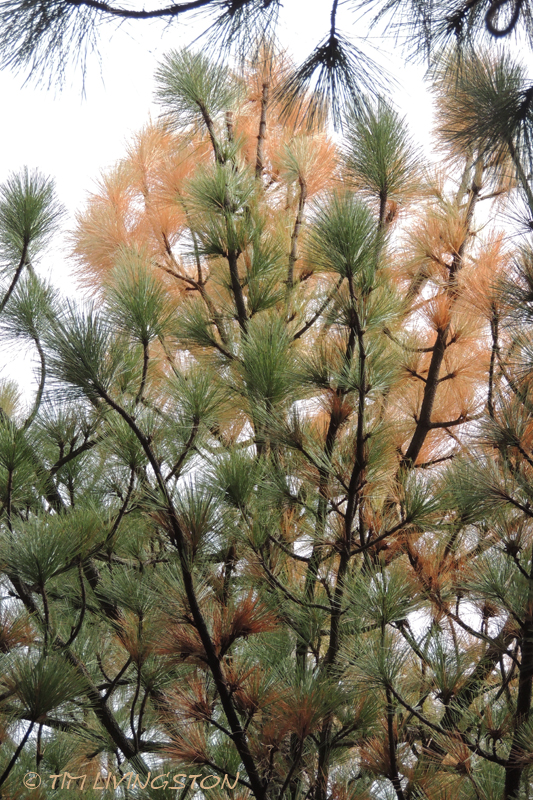“Bug kill” or “beetle kill” are the terms we use for insect killed trees. Bark beetles kill more trees in our forest than any other insects. They are always present in the forest. At low population levels, the dead trees or snags they create are left for wildlife. When beetle populations spike up, we salvage most of the dead trees.

We salvage dead and dying trees to capture their value while the wood is still sound. Red or fading tops signal the problem areas.

This pitch tube is the entry point where the beetle first bored into the tree. If the pitch tube is amber in color, the tree successfully fended off the attack. When the pitch tube is pinkish like this one, the beetles successfully penetrated into the tree.

This is the culprit, a red turpentine beetle, Dendroctonus valens. They bore into the trees to lay eggs. Trees in a weakened state, such as during severe drought, attract these beetles.

The red turpentine beetle adult, Dendroctonus valens, normally attacks the base of the tree. Such a tiny creature can do so much damage.

The larva of bark beetles are what kill the tree. The adult beetle chews a nursery gallery into the tree to lay her eggs. The larva hatch and spread out from that gallery creating more galleries as they feed. During this feeding process the larva girdle the cambium of the tree causing it to die.

The top of this Ponderosa pine is dead. This in an indication of a different beetle, Ips sp. Location of the attack on the tree can be a diagnostic tool for identification of the insect attacker. There a many species of bark beetles that attack trees.
I’ve been asked over the years what can be done to protect the trees from these beetles. The answer is very little. Keeping your trees thinned out reduces competitive stress between the trees. Reducing stress on the trees is the only effective way to reduce attack by the beetles. However, in years when the beetle populations peak, they will even attack healthy trees. Once you see evidence of beetle attack, it is already too late. Salvaging the dead and dying trees is all that can be done. You have to “log the problem away.”
